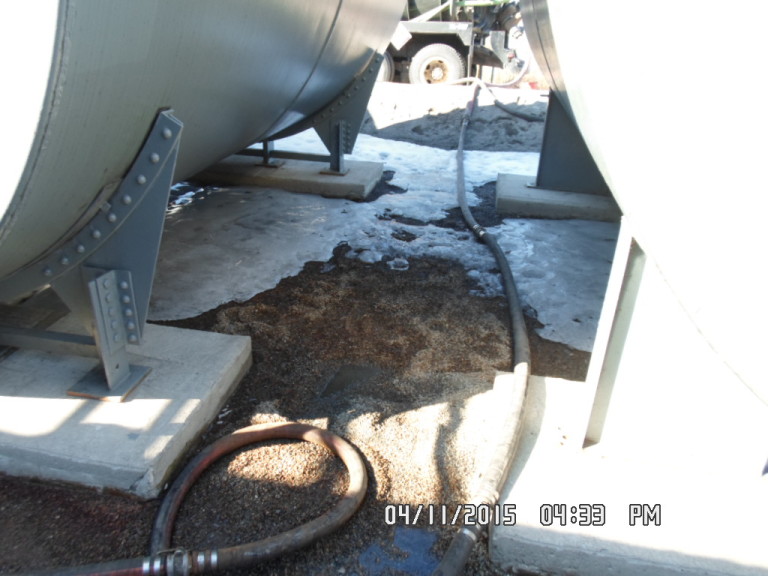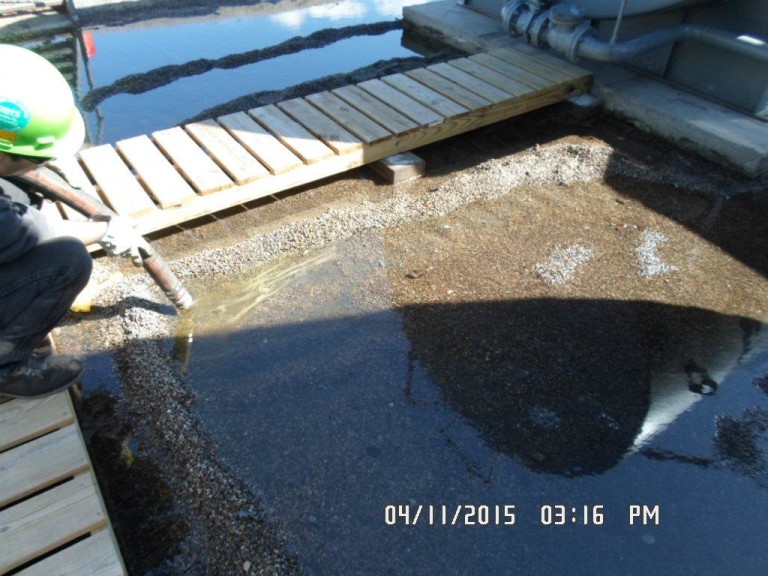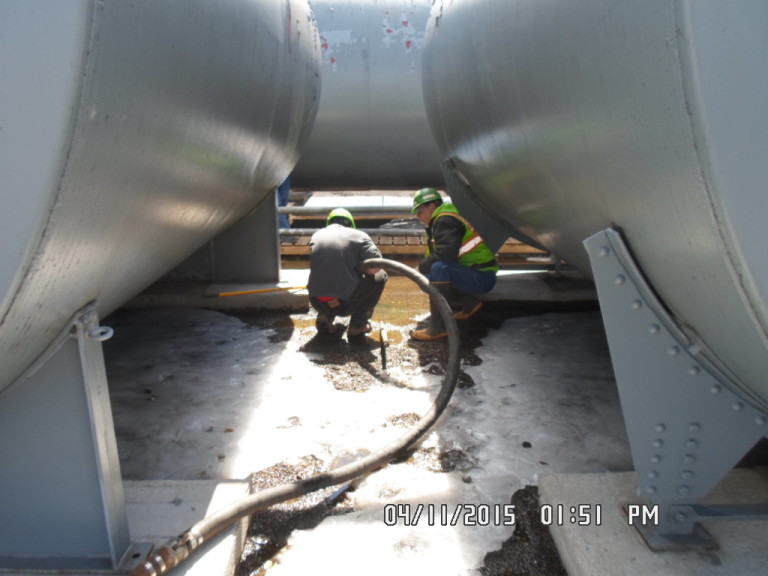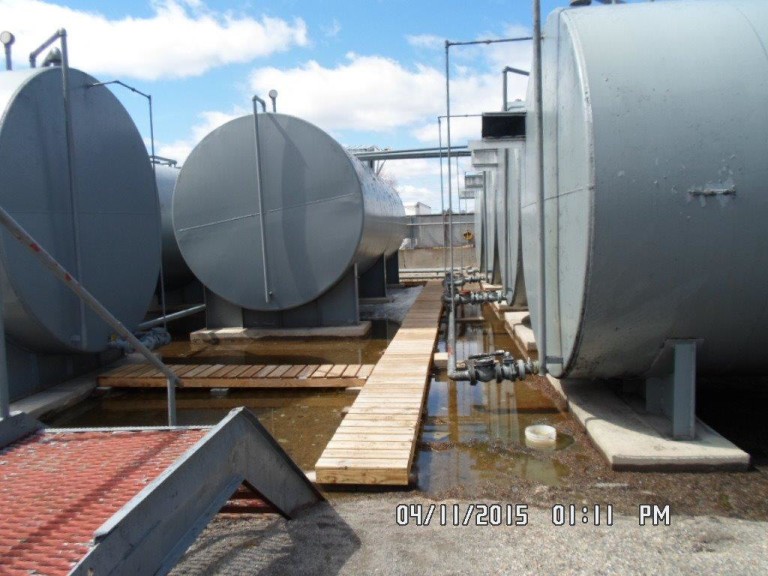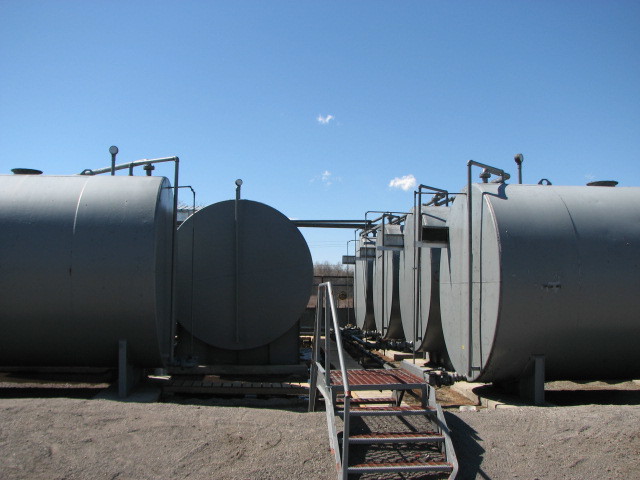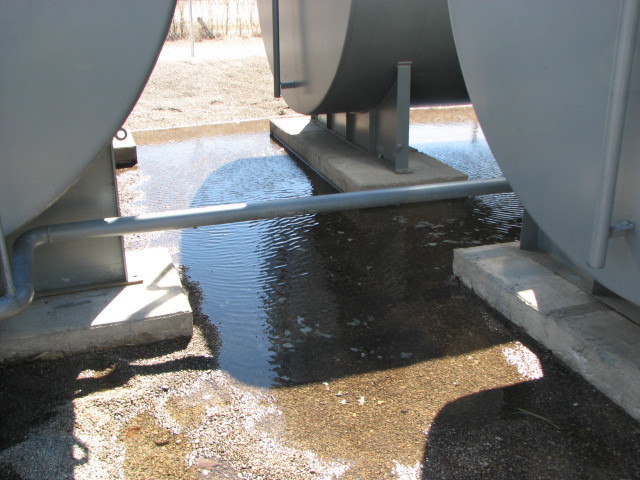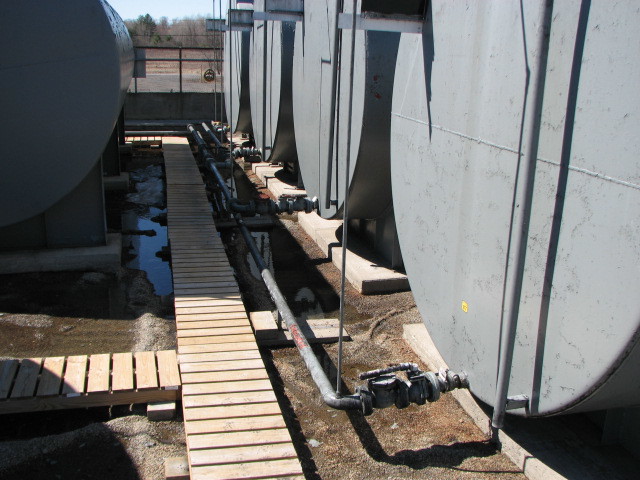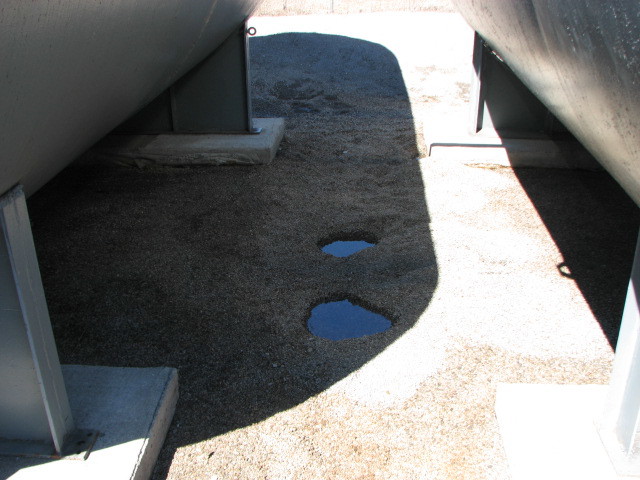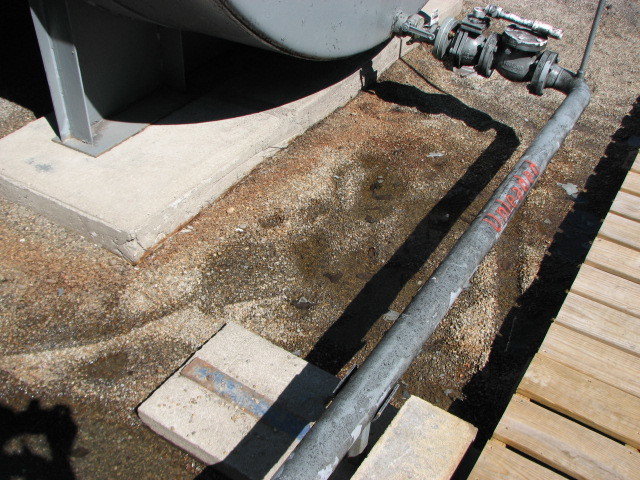REI was contacted by a bulk fuel hauler regarding a release to a storage facility in Brier Hill NY. Initial reports indicated that while making a delivery to a bulk storage facility an estimated 800 gallons of gasoline was released from the tank vent due to an overfill. The facility ordered a 4,500 gallon delivery. The driver measured the tank for the volume of existing gasoline and, according to a tank chart in the driver’s truck, there was capacity for the delivery into a 15,000 gallon tank. However due to improper labeling/signage, the tank had an actual capacity of 10,000 gallons. Personnel notified the local NY DEC agent and the facility manager who reported that the release (overfill) was confined within the bulk containment and was not leaking beyond the containment structure. Since the release was to a containment structure, the NY DEC agent requested a vacuum truck be mobilized to remove the gasoline.
REI mobilized personnel and equipment to begin initial containment and cleanup of the spilled gasoline. Personnel observed that that the containment measured 55×55 feet and the base was constructed of 6 inches of sand under a liner with 6 inches of sand over, geo fabric and 4 inches of pea stone as a surface. The tank cradles are located on concrete pads “floating” on the pea stone and as such excavation could not be conducted without threatening the tank cradles. According to the facility manager, the containment area was pumped out prior to the delivery and reportedly there was about 2 inches of water present above the stone below the tanks. The containment area is periodically pumped, with the untreated discharge being applied to the ground surface outside of the containment. The containment is diked at the perimeter and did not appear to be leaking. The area is rural with a residential property approximately 150 yards from the site and possibly 2 other residences within 500 feet. Two (2) businesses are also proximate, one being a rendering plant.
Approximately 1,708 gallons of gasoline and water was removed from the containment during initial response activities. At the completion, no product was observed but petroleum sheen was present at the margins of the stone. Several small (hand) excavations were advanced into the stone to recover additional product. Approximately 260 gallons of gasoline was collected by the vacuum truck based on stick readings of the tank.
Since excavation of impacted material from within the containment area is not practical, REI opted to monitor the weather in the area and have a vacuum truck recover gasoline/impacted water based on the amount of rainfall experienced. Due to a summer drought, several months passed before enough rain collected in the containment area to facilitate additional vacuuming and recovery. Once enough rain was received additional vacuuming occurred and there was no visual presence of petroleum impact. Laboratory analysis of a water sample collected during the final vacuuming event revealed favorable results thus eliminating the need for additional remediation within the containment area.
As a precaution the private drinking water wells of the nearby residences and businesses were sampled and analyzed.

